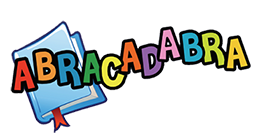Using ABRACADABRA
In this section, teachers will find ideas, tips and strategies for effectively integrating ABRA into their classrooms.
The software is designed to support a balanced approach to literacy instruction, so it is highly recommended that children work on all skill areas (Alphabetics, Fluency, Comprehension, Writing) as a school year unfolds.
There is no set path in ABRA. The tool’s flexible structure means teachers can sequence activities to meet the specific needs of individual students.
It is recommended that ABRA is used for a minimum of one hour per week. If possible, teachers should aim for two hours each week.
Teachers have used ABRA in computer labs, in classroom centres, or with children who have their own computer or tablet. Visit the Video section to see ABRA in action in different settings.
In large classes, teachers may need to group children. We suggest using pairs or groups of three students. See tips on how to structure groups around a computer.
Teacher Guides
The purpose of these guides is to support the implementation of ABRA and READS within a particular context. The guides detail relevant content such as links to local curriculum, pedagogical and technical support for ABRA's Student Module, best practices and tested classroom management strategies, and more.
ABRA Support
Learn more about tool features and external resources that help teachers use ABRA successfully in their classes.
Classroom and Extension Activities
The CSLP has worked with teachers and pedagogical consultants to develop structured activities that support the use of ABRA. As a complement to the technology-based activities, engaging print-based activities have been designed to help children develop and practice their foundational literacy skills outside of the software.
Visit Resources for a complete list of classroom and extension activities, including country-specific materials.
Teacher Manage
The LTK+ Manage feature helps teachers organize and manage how students within their class(es) use ABRA. Teachers can retrieve and modify students’ nicknames and passwords so they can more easily sign into the tool. In order to share information with others in the school, teachers can link other teachers and students to their class. To learn more, please refer to this teacher aid: Quick Tips.
Assessment Module
The Assessment module allows teachers to monitor students’ progress within the tool and to identify which students are experiencing difficulty. Teachers can generate and review a report that shows time spent on activities, errors made, and stories read. The Assessment module is accessible when entering the LTK+ as a teacher.
Other Resources
A wide variety of multimedia classroom resources are available for download in the Resources section. Teachers will find both technical and pedagogical support materials, as well as worksheets for student use, bookmarks, posters, and flash cards.
Using ABRA with Other LTK+ Tools
Other LTK+ tools support students’ acquisition of literacy skills.
ePEARL, an electronic portfolio, has a built-in connection to ABRA, which allows students to record their readings and/or to create original content inspired by the ABRA stories. Students can also set goals and reflect on their work. Both teachers and parents can provide feedback on ePEARL work. To explore how ePEARL can best support the skills targeted in ABRA, please read this document Using ABRA and ePEARL Together.
READS, a collection of age-appropriate electronic books, provides access to over 700 stories in multiple languages. READS helps students further develop their reading fluency, comprehension strategies, and writing skills.

